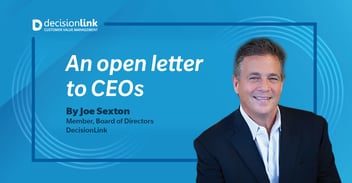The Chief Revenue Officer in 2021 and the Pendulum Swing

As a former Chief Revenue Officer, with responsibilities for the Canadian subsidiary of CA technologies, I had oversight over all go-to-market activities; specifically these included: field marketing, sales (including all indirect channels) and customer relationship management, with a dotted line reporting coming in from professional services. My primary goals always centred around three key pillars, 1) customer acquisition, 2) customer retention and 3) customer expansion.
For a few years, this model worked great, and it helped our team double CA Canada’s revenue, in just a little over 3 years. I had P&L responsibilities and specific sales targets, customer satisfaction survey targets and renewal targets. The renewal targets were set at achieving 110% of prior year’s run rates within our strategic accounts. It was a great 3 years, and we had fun working together as a tightly-knit cross-functional team, all focused on individual goals, as well as the overall Canadian target.
Later in the decade things changed dramatically on several levels:
- New sales and marketing tools were introduced as well as new selling methodologies.
- Sales was broken into 2 major elements:
- Sales Specialists who focused on winning the “market”. They were absorbed into the product team groups and focused on very tactical “feature/function” selling
- Account Director roles who focused on winning the “account” and focused on the relationships, and they reported into area heads (like me)
- The Customer Relationship Management function was dissolved, and the folks remaining became “renewal specialists” focused purely on renewals with no focus on adoption, customer care or education.
Overall, things became disaggregated and matrixed, and that overall sense of account centricity and accountability for customers seemed to fade. We seemed to be more focused on our org charts and respective P&L’s than the customer experience and driving deeper relationships.
About halfway through that fiscal year, I picked up GM responsibilities for approximately 13 states in the Western US region, but things had changed significantly, and shortly thereafter I decided to move to start a new adventure in marketing. The GM role just wasn’t the same, and we didn’t seem focused on customers.
Fast forward to today (16 years later), and I feel like the pendulum has swung again.
Today, companies are focused on a unifying metric that I felt strongly about when I ran a revenue operation – “Customer Lifetime Value” (CLV).
CLV is so much more interesting and important than just that initial sales win, it gets into the value that can be generated from a client over a period of time; it encourages a unified approach and puts customers back at the centre of everything. In other words, from attracting, to engaging, to winning, to retaining, to expanding, a CLV approach translates to much more value to shareholders/investors than just that initial sale.
To do this, enterprises are enlisting the help of sales “superheroes” who really understand the full continuum and drive towards commercial excellence versus just beating people up at the end of a month for their forecast. I feel like I’ve died and gone to heaven seeing businesses rotate back into a customer-centric mentality.
Maybe I was an egocentric, control freak back in the days of running CA Canada, wanting all the pieces of the puzzle to manage to… but I don’t think so. I truly believe I wanted what was best for our clients, and felt we could do that together as a team, with one central point of accountability…me, the general manager versus 6 disparate P&L holders off in product land or services land or marketing land. The “glue” was needed.
In terms of the new tools that were introduced by these disparate groups, like CRM, marketing automation, PLM and customer success tools, my opinion is that we’ve come a long way in integrating them technologically – but there’s still a missing link to all of them and that is real data on true customer value.
For example, when we have a new opportunity, we still seem to run around the organization looking for customer case studies or business case examples for RFP responses, and we still scramble to determine how much value a customer is really getting from us so we can have an upper hand at renewal time and don’t get hosed by a savvy procurement manager.
It’s time that in addition to pulling things together under the CRO and being focused on customer lifetime value, we must have a way to measure that value and have it omnipresent in all our systems and at our fingertips when we need it. Only then will all of these systems truly deliver on their promise; for instance:
- CRM systems that understand the value delivered to a customer,
- a marketing automation system that can integrate value into email campaigns and case studies,
- customer success tools that measure adoption levels and commensurate value realized.
- And PLM systems that capture value from various customers to help with product pricing and packaging in the future.
So, my take on what we’ll see happening in the CRO seat in 2021 is:
- CROs that own from customer acquisition to renewal to expansion is back in vogue and will be responsible for marketing, sales and customer success teams accordingly.
- More and more CROs will be measured on Customer Lifetime Value
- A true enterprise-class Value Management function or platform will be leveraged by most people in the commercial value chain and value will become an enterprise-wide strategic asset.
Joanne Moretti, CMO DecisionLink


 ValueCloud
ValueCloud
.png?width=118&height=76&name=Rectangle%20(3).png) ValueCloud Ignite
ValueCloud Ignite
.png?width=92&height=92&name=Rectangle%20(4).png) Free Assessment
Free Assessment
.png?width=100&height=100&name=Rectangle%20(5).png) Watch a Demo
Watch a Demo
.png?width=82&height=96&name=Rectangle%20(6).png) Value Calculator
Value Calculator

.png?width=62&height=51&name=Group%2010%20(1).png) Marketing
Marketing
 Sales
Sales
 Customer Success
Customer Success
 Engage Prospects
Engage Prospects
 Win Deals Faster
Win Deals Faster
 Retain Customers
Retain Customers
.png?width=62&height=62&name=Rectangle%20(8).png) Adopt and Scale
Adopt and Scale
.png?width=54&height=54&name=Rectangle%20(9).png) Cybersecurity
Cybersecurity
 Healthcare
Healthcare
.png?width=54&height=54&name=Rectangle%20(10).png) IT & Software
IT & Software



